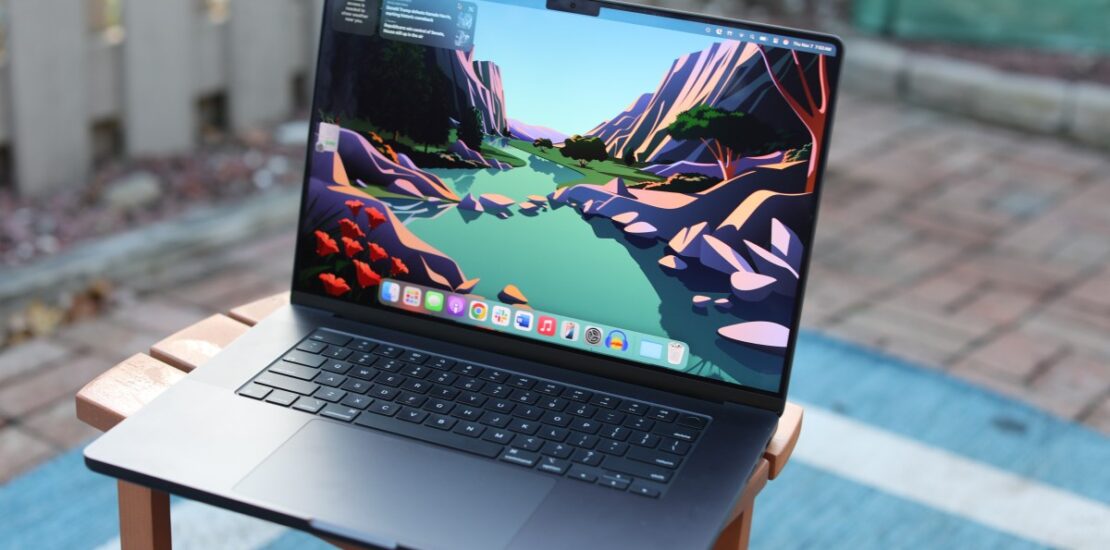Apple 16-inch MacBook Pro (M4 Pro) review
- November 7, 2024
- Posted by: chuckb
- Category: TC Artificial Intelligence

Apple’s Laptop Overhaul: A Look Ahead to 2026 and Current Offerings
On Monday, Bloomberg reported that Apple plans a significant overhaul of its entire laptop line, aiming for a complete redesign expected to roll out in 2026. However, this timeline is still speculative, and several factors—including market conditions and technological advancements—could alter these plans significantly.
Apple has established a regular release schedule for its MacBook Pro line, reminiscent of the iPhone’s annual updates. Recently, their offerings have been tethered closely to the introduction of new chipsets, contributing to a perceived predictability in updates. The evolution of the M-series chips has led to powerful, efficient devices that have defined Apple’s current laptop lineup.
The Impact of Apple Silicon
The shift to Apple Silicon, specifically the M-series, has resulted in notable efficiency gains and performance improvements. The M-series chips have rejuvenated the MacBook line, delivering remarkable power in thinner, lighter designs. Apple is positioning itself with aspirations to develop laptops that lead the tech industry in thinness and weight. The challenge, however, will be maintaining processing power and battery life while achieving these goals.
Apple’s recent MacBook Air models, which operate without fans, highlight this balance. The MacBook mini’s efficiency allows for a compact design, but it raises the question of whether forthcoming models will compromise power for size. Battery life, now a hallmark feature of Apple’s laptops—rated at 24 hours for the latest Pro models—is crucial for users who require mobility and dependability.
Should You Buy Now?
The constant dilemma for potential buyers remains: purchase now or wait for the next iteration? While longer-term reports may suggest a major upgrade is on the horizon, those seeking immediate solutions should find current offerings satisfactory. The new M4 chips bring considerable enhancements, and Apple’s fragments of marketing focus heavily on resource-intensive tasks appealing to professionals in video editing and STEM fields.
For most consumers, including casual users, the MacBook Air represents the best value. It is lighter, more affordable, and possesses adequate performance for general computing needs. While the Pro models offer advanced capabilities tailored for specific professional tasks, they predominantly apply to a niche market segment.
Advancements with the M4 Chips
Apple’s latest M4 line claims to outperform previous Intel processors substantially—reportedly by up to 9.8 times the speed of 2019 models and 3.5 times faster than the M1 Pro and M1 Max. The M4 chips support a more robust configuration geared towards demanding applications, but the price disparity might be unwarranted for casual users.
Options for customizing specs are vast, with configurations ranging from the 14-core CPU to 20-core GPU variants. The price can rise significantly with advanced features; a fully-specced model can exceed $7,000, creating concerns about cost efficiency for less demanding users.
The differences between M4 variants primarily include CPU and GPU core counts and their memory bandwidth, an essential aspect for performance. The M4 Pro and M4 Max chips also support Thunderbolt 5 for improved data transfer rates, setting a foundation for future-proofing against evolving technology standards.
Notable Features and Design
One of the notable upgrades in the new MacBook Pro lineup is the introduction of a nano-texture display, designed to reduce glare significantly. For outdoor workflows, this feature may improve user experience substantially, making it a worthwhile consideration for those who often work in bright conditions.
While the 16-inch MacBook Pro is powerful, weighing in at 4.7 pounds and measuring 0.66 inches thick, it is comparatively heavier than other models, including the 14-inch Pro and the MacBook Air. This could impact portability, especially for users who frequently travel or work outside a traditional office setting. The Pro model’s three Thunderbolt ports, HDMI, and SD slot contrast sharply with the Air’s more limited connectivity options, highlighting its suitability for professionals who require extensive connectivity.
Conclusion: Current Offerings vs. Future Outlook
As the tech cycle continues, there’s a clear advantage in waiting for major updates, particularly for those on the fence about purchasing a new device. For now, the current M-series models exhibit efficiency and power, buoyed by improved design and build quality. Apple’s promotion around these devices emphasizes improvements across the board, essentially solidifying their position in the market.
Looking ahead to 2026, while excitement surrounds potential advancements, potential buyers should not feel pressure to act impulsively. Users who already possess current M-series models should feel comfortable with their investment, as Apple’s commitment to continuously enhancing their laptops suggests substantial value over a prolonged period.
In conclusion, while an overhaul in 2026 would likely bring more substantial changes and features, today’s offerings from Apple already present compelling choices for a wide array of users, whether they seek lightweight, casual-use devices like the MacBook Air or higher-performance models like the MacBook Pro. As always, finding the right balance between needs and budget remains essential in the world of consumer electronics.
